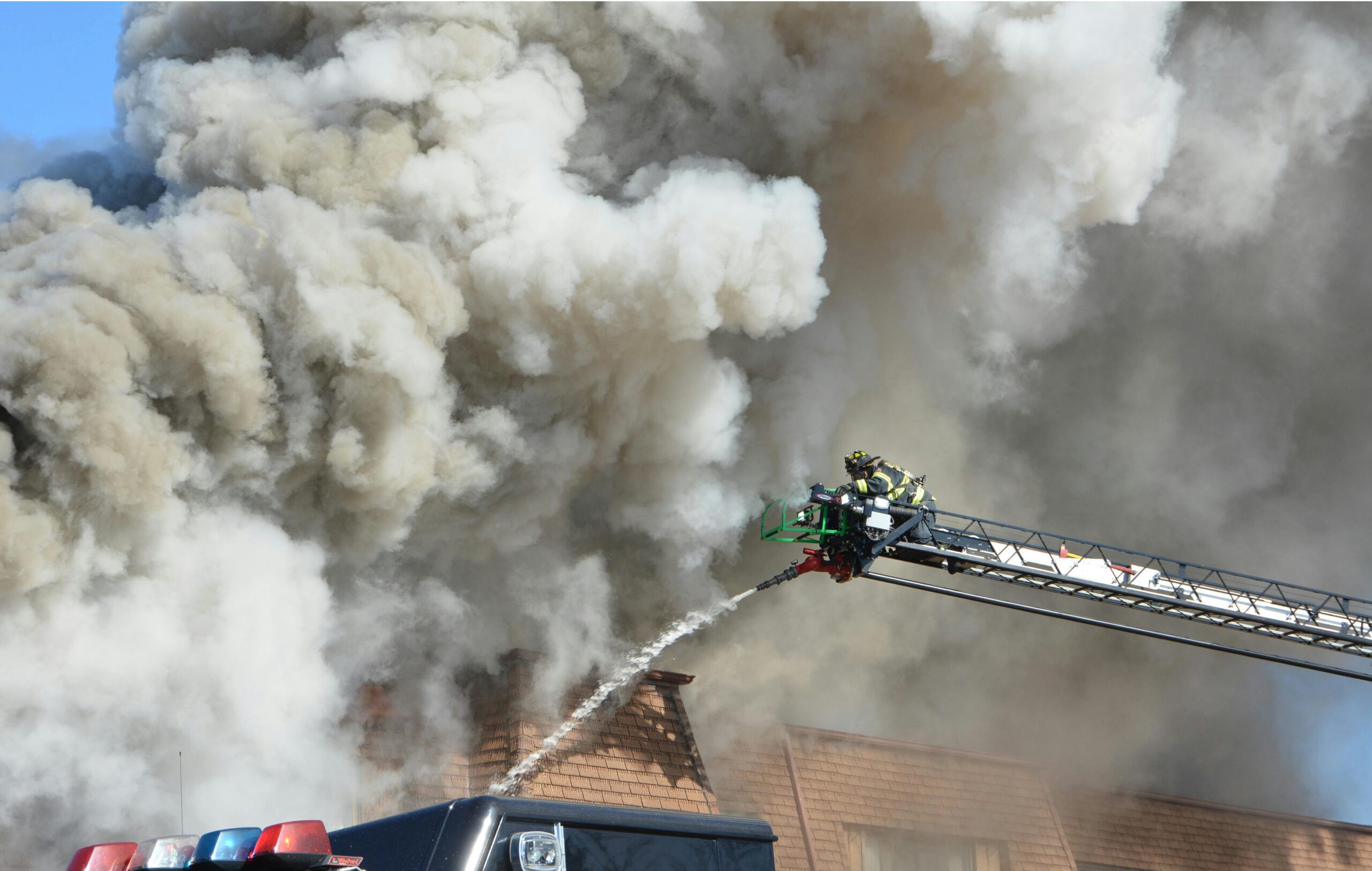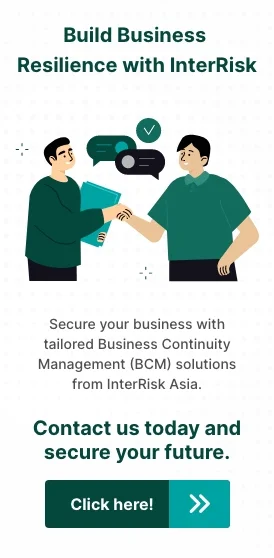Principles and Procedures Developing a Professional Emergency Response Plan
Following the previous blog that discussed crisis management, this article will guide readers through another equally important concept in today’s unpredictable world—Emergency Plans and Emergency Response. These tools are often used in conjunction with Business Continuity Plans (BCP) and Crisis Management to effectively handle adverse situations that may disrupt organizational operations.
Emergency plan What is
An emergency Plan is a plan developed to prepare for, respond to, and recover from emergency situations. It does not focus on the causes of the event but rather emphasizes the impacts and how to manage those impacts. Meanwhile, an Emergency refers to an unexpected event that can result in death or serious injury to employees, customers, or the general public, or an incident that may cause business operations to halt, leading to physical damage, environmental harm, or posing a threat to the organization’s financial status and reputation. (Definition by FEMA)
Emergency Management, Crisis Management, and Emergency Plans related? How are
Many organizations may be confused about the differences or relationships between Crisis Management, Emergency Management, and Emergency Plans. To clarify, we’ve summarized the connection between these three concepts below.
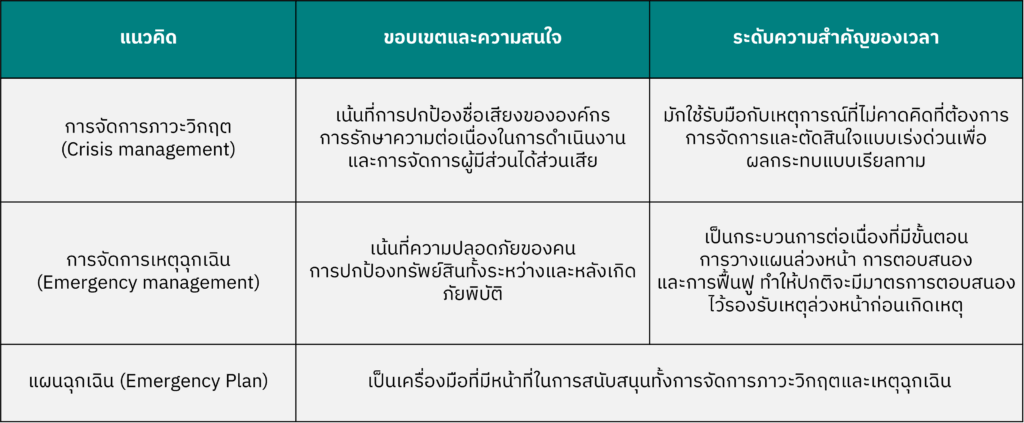
A simple example is a case involving a company that manufactures automobile airbags. The company once faced a design flaw that caused the airbags to pose a danger to drivers when deployed, leading to a massive product recall of vehicles equipped with that airbag model. In this situation, the organization had to implement Emergency Management to address the immediate safety risks to drivers. At the same time, it faced a Crisis Management challenge related to brand reputation and potential legal violations.
Objective to prepare an emergency plan.
The objectives of developing an Emergency Plan offer several benefits, which can be summarized as follows:
1. Reduce the impact of emergencies
To limit damage to life, property, and the environment, and to reduce the recovery time needed to return to normal conditions as quickly as possible.
2. Ensure preparedness for emergency response
To prepare personnel to be ready and understand the procedures to follow during an emergency, and to establish an effective communication and coordination system.
3. Minimize confusion and panic
To reduce stress and decision-making errors by having clear operational guidelines.
4. Maintain the business Continuity
To enable the organization to prevent disruptions and recover quickly, while enhancing credibility and confidence among customers and stakeholders.
Emergency plan What are involved?
In the context of business continuity management, an Emergency Plan should include the identification and preparation of essential resources required to develop and maintain the Business Continuity Plan (BCP), such as time, personnel, and budget. This ensures that the organization can effectively implement its policies and achieve its objectives. The plan should be clearly documented and tailored for each team.
- Strategic Plan: This plan manages the organization’s direction during a crisis and is overseen by the senior executive team.
- Tactical Plan: Coordinates efforts among multiple departments to ensure continuity of operations.
- Operational Plan: Focuses on immediate response actions, such as a fire emergency plan, a power outage response plan in a factory, or an earthquake emergency plan.
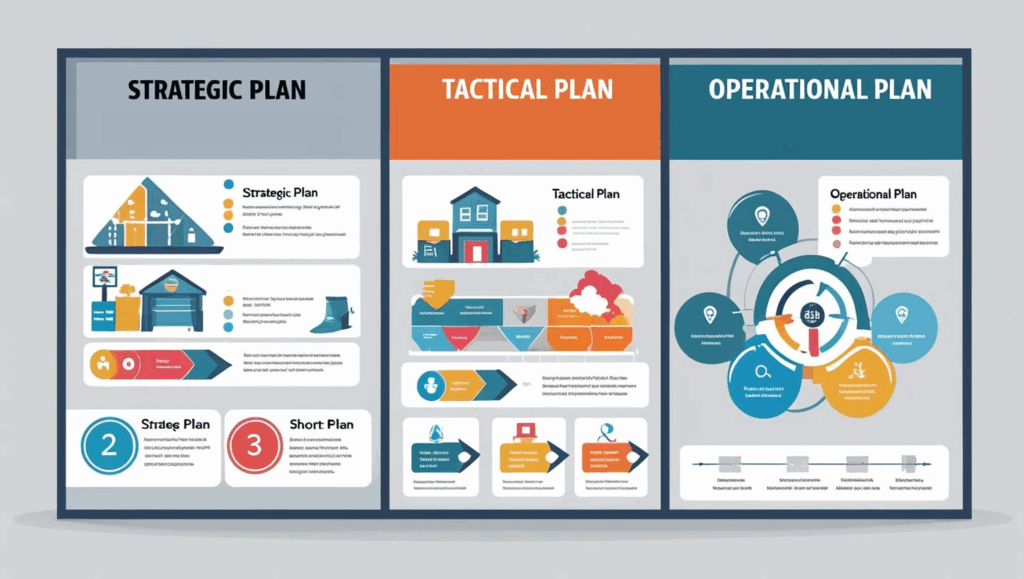
Emergency Plan What is the process for developing an
According to ISO 22332, the development of an Emergency Plan and Business Continuity Management should include the following elements:
Well-defined plan
A Business Continuity Plan is a document used in high-pressure and time-constrained situations. Therefore, the plan should not be a manual or report overloaded with unnecessary information. Irrelevant content that does not contribute to emergency response should be avoided. The plan should be as self-contained as possible to minimize reliance on external sources. Additionally, team members should be involved in the development and maintenance of the plan to ensure clear understanding of its contents.
Clear and User-friendly plan
The content of the plan should be concise in wording and easy to understand. Abbreviations should be avoided, and it should clearly specify who needs to do what, when, and how.
Comprehensive plan
The content of the emergency plan should be based on the strategies chosen by the organization. Multiple options (if available) should be presented to allow flexible responses depending on the situation. The plan should include clear procedural details to minimize misunderstandings, but should avoid excessive detail that could hinder usability.

6 Steps to Developing an Emergency Plan
A summary of 6 simple steps for planning and developing an emergency plan, as shown in the image below.
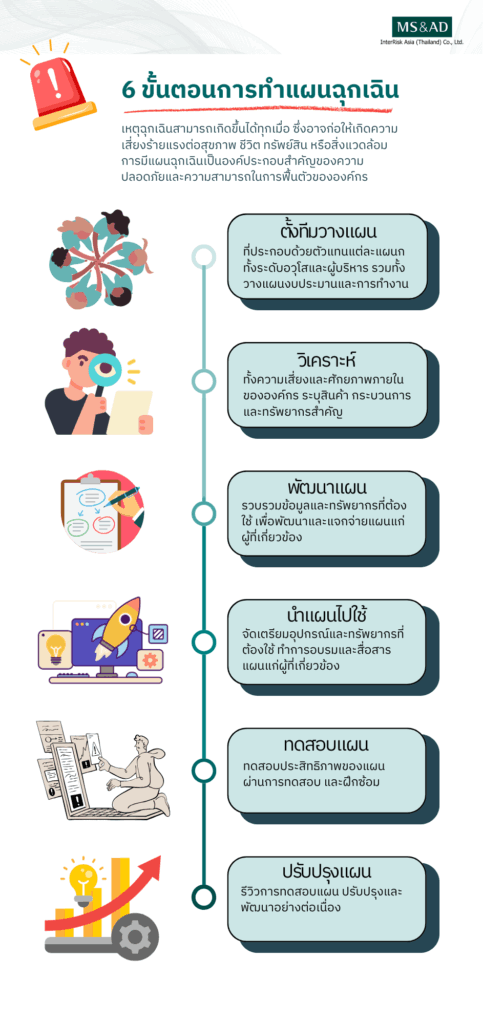
Preparing for the incident 6 Examples of Emergency Plans
Organizations can develop documented guidelines for responding to anticipated emergencies. These may include steps to mitigate the impact of such events and clearly explain how strategies, solutions, and resources will be applied if the event occurs. In many cases, disruptions can be predicted in advance. Let’s explore 6 examples of critical incidents and key considerations for each emergency plan, based on various standards.
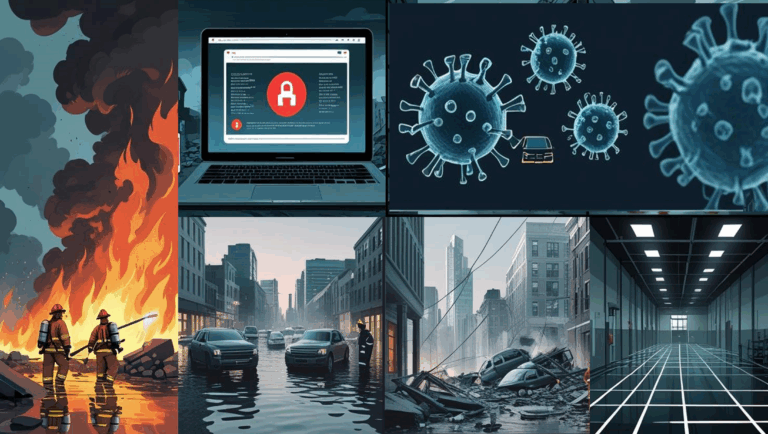
According to the Ministerial Regulation B.E. 2555 (2012) on Standards for Safety, Occupational Health, and Working Environment in Fire Prevention and Suppression, employers are required to establish a Fire Prevention and Suppression Plan that includes the following components:
Inspection and monitoring to identify fire risks and eliminate potential causes of fire.
The training program aims to equip employees with knowledge of fire prevention and practical procedures to follow during emergencies.
The fire prevention campaign is designed to promote awareness and a safety mindset among employees at all organizational levels.
The fire response plan provides a clear sequence of actions for employees to take upon discovering a fire, ensuring safety and effective incident management.
The fire evacuation plan is established to ensure the safety of employees and property within the workplace. It includes personnel headcount verification units, designated fire evacuation guides, assembly points, and transportation arrangements.
The relief plan includes coordination with government agencies, damage assessment, rescue and evacuation of affected individuals, evaluation of losses, and immediate corrective actions to enable the business to resume operations as quickly as possible.
A cyberattack response plan based on ISO22332 standards should be aligned with the overall information security response strategy. The plan should include the following detailed steps:
Identify the type, scope, and impact of the cyberattack.
Identify immediate actions to contain the attack.
Response to ransomware ransom demands.
Response to data breach incidents.
Preparation of alternative work methods that do not rely on other applications or networks.
According to the Emergency and Disaster Preparedness Manual by the Department of Industrial Works, situations where electrical power disruptions prevent equipment and machines powered by electricity from functioning—monitoring and studying past incidents is crucial for effective planning and response.
Analyze and assess risks, likelihood of occurrence, and potential impacts.
Establish a working group from relevant agencies to coordinate and implement emergency response measures.
Considerations according to ISO 22332 standards for business continuity management.
News reporting from media about threats from pandemics or epidemics.
Evidence of disease outbreaks in communities or regions.
Announcements from government public health agencies.
Possibility of direct exposure to the disease.
Ability to transfer or relocate work to unaffected areas.
Support for affected employees and their families.
Provision of personal protective equipment (PPE).
According to OSHA (Occupational Safety and Health Administration) standards, initial employee action plans should consider the following topics.
During an earthquake
Find a safe place, such as under a sturdy table or near a wall without windows, as glass may shatter.
Move cautiously, as objects may fall or break.
Be prepared for aftershocks, which may occur again.
Be aware of fire hazards.
Fires are common hazards after earthquakes due to damaged electrical wiring or broken gas pipes.
If you smell gas or see smoke, immediately notify authorities and evacuate the area.
Evacuation from buildings.
If evacuation is necessary, use stairs only—do not use elevators.
Watch out for falling debris during evacuation.
Fire alarm systems and automatic sprinkler systems may activate automatically; we cannot be certain that there is no actual fire.
Example guidelines for flood response planning in industrial factories, provided by the Department of Industrial Works.
The severity of flooding depends on several variables, including water depth, duration of flooding, water flow velocity, rate of water level rise in rivers, frequency of flood occurrences, duration of rainfall. Effective flood prevention can help reduce the need for repairs and restoration of buildings and homes after a flood.
Assess building vulnerabilities based on the characteristics of different types of structures, including resistance to water pressure.
Use sandbags and water barriers to seal foundations and prevent initial water intrusion into the area.
If chemical containers are damaged or leaking, respond according to the recommendations in the Safety Data Sheet (SDS) and the label attached to the container.
Relocate machinery, tools, and equipment that can be moved to areas not affected by flooding. If machinery or pressure vessels cannot be moved, attempt to block water from entering the equipment.
Provide water pumps to remove floodwater during the flooding event.
Free Download Sample PDF: Emergency Plan Guidelines from InterRisk
Having a clear and systematic emergency plan enables your organization to respond effectively. Prepare in advance with a company emergency plan. You can download a sample guideline from the link below.
Start your emergency planning with a free consultation from INTERRISK ASIA
Understanding the principles of emergency management and planning according to proper standards is essential. This includes exploring relevant principles and factors. However, this article cannot include all the details from the standards to avoid excessive length. In today’s world, where incidents and risks facing organizations are increasingly complex, creating an emergency plan without review or drills—both internal and external—may not be sufficient for organizational sustainability. If you are interested in creating, reviewing, or conducting drills for your emergency plan, contact the InterRisk consulting team today for a free initial consultation!
InterRisk Asia (Thailand) is a company specializing in Business Continuity Management (BCM) services. We provide comprehensive support ranging from Business Impact Analysis, Risk Assessment, Business Continuity Plan to training, drills, and consulting services in accordance with ISO 22301 standard.ur goal is to help organizations effectively and sustainable prepare for and respond to incidents of all scales.
End-to-end consulting for the development of a robust BCMS, with pathways to ISO 22301 certification
Specialized training programs designed for both management and staff to enhance awareness and competency in BCMS practices.
Analysis of operational risks and disruption impacts to inform the development of targeted continuity strategies.
Structured exercises to validate your BCP and strengthen organizational preparedness and response capabilities.
Experienced consultants with hands-on BCMS expertise
Customized planning tailored to your business context.
Practical tools and templates, with expert support for testing and improvement.
